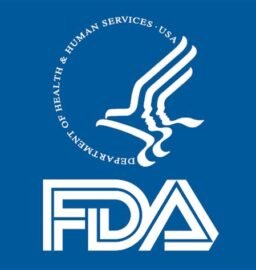Clinical evaluation: The clinical evaluation report (CER) complies with the MEDDEV Guideline 2.7/1 rev. 4.
With the full implementation of the strict European Regulation (MDR 2017/745) in 2020, the issue of clinical evaluation has become a sore point for Medical Device manufacturers. Regardless of their risk class, all Medical Devices marketed in Europe are subject to the clinical evaluation process, in accordance with point 6 bis of Annex I of Directive 2007/47/CE. The Clinical Evaluation report (CER) alone is no longer enough.
While once considered just an element of the technical file, today the REC according to the latest version of the MEDDEV Guideline 2.7/1 (rev.4) is, in fact, the final phase of a carefully planned clinical evaluation process. Even if products are already CE marked, manufacturers must keep up with ever-higher standards because Notified Body (NO) control of clinical assessment and ERC will only intensify as 2020 approaches.
The MEDDEV Guideline 2.7/1 rev.4 defines clinical evaluation as a procedure that involves the collection, estimation, analysis and evaluation of the clinical data available to support the compliance of the Medical Device with the Essential Requirements (ER). In other words, the clinical data serve as evidence that, if used in accordance with the manufacturer's IFUs, the Medical Device is safe, has the claimed performance and any unwanted side effects, compared to the clinical benefit of the device, is considered acceptable.
So how can manufacturers ensure that their clinical evaluation process and RECs meet the latest regulatory expectations expressed in MEDDEV 2.7/1 rev.4?
Here are some helpful ideas to consider:
Define clear objectives in the CER. Identify relevant ERs supported by clinical trials (based on device specifications) and define the scope of clinical evaluation, i.e., specific and measurable goals related to safety, performance, and risk/benefit endpoints;
Define if a clinical investigation is required . Make sure that the available clinical trials are sufficient and adequate to answer all relevant ERs. As a general rule, high-risk and Class III devices should always undergo clinical investigation, as well as those based on innovative or unproven technologies, and those claiming a new clinical use;
Prepare a “bulletproof” Equivalence Proof . Based on the comparison between the device in question and several CE-marked equivalent devices available on the market, the demonstration of equivalence is established in terms of clinical, technological and biological parameters (defined by the manufacturer) and must be very detailed. at CER.
To provide a proper proof of equivalence, carefully documented information is required for each equivalent device. In addition, the differences between the device in question and the equivalent devices must be identified, disseminated, evaluated and justified;
Monitor post-marketing activities (PMS and PMCF). Plan an appropriate PMCF, document all findings in the CER, and ensure you have processes for PMS and PMCF in place. These must be "living" documents because the security and performance of a device must be confirmed throughout its life cycle;
Update the CER frequently . Define the CER update frequency and justify it. The CER is also a "living" document and therefore whenever new post-marketing surveillance data emerge that could influence the CER findings, they should be revised. Also, changes to the state of the art and current knowledge about equivalent devices should trigger a CER review. Devices used for comparison should always be kept relevant.
Under the strict requirements of the MDR that reflect the high expectations of the European Commission, NOs will question both the quality of clinical evidence (hence the criteria that include such data in clinical evaluation) and the basis for establishing equivalence with another device. . The stakes are high: they must ensure that only high-quality, safe and effective Medical Devices are placed on the European market.
Manufacturers preparing for new legislation have MEDDEV 2.7/1 rev.4 at their disposal to use as a roadmap to guide their transition. CERs based solely on demonstrating clinical equivalence will no longer suffice, especially for high-risk devices, which likely require clinical investigations. Only by aligning and integrating the CER with risk management, surveillance and post-market supervision activities will compliance with the requirements of the European MDR be achieved.


















